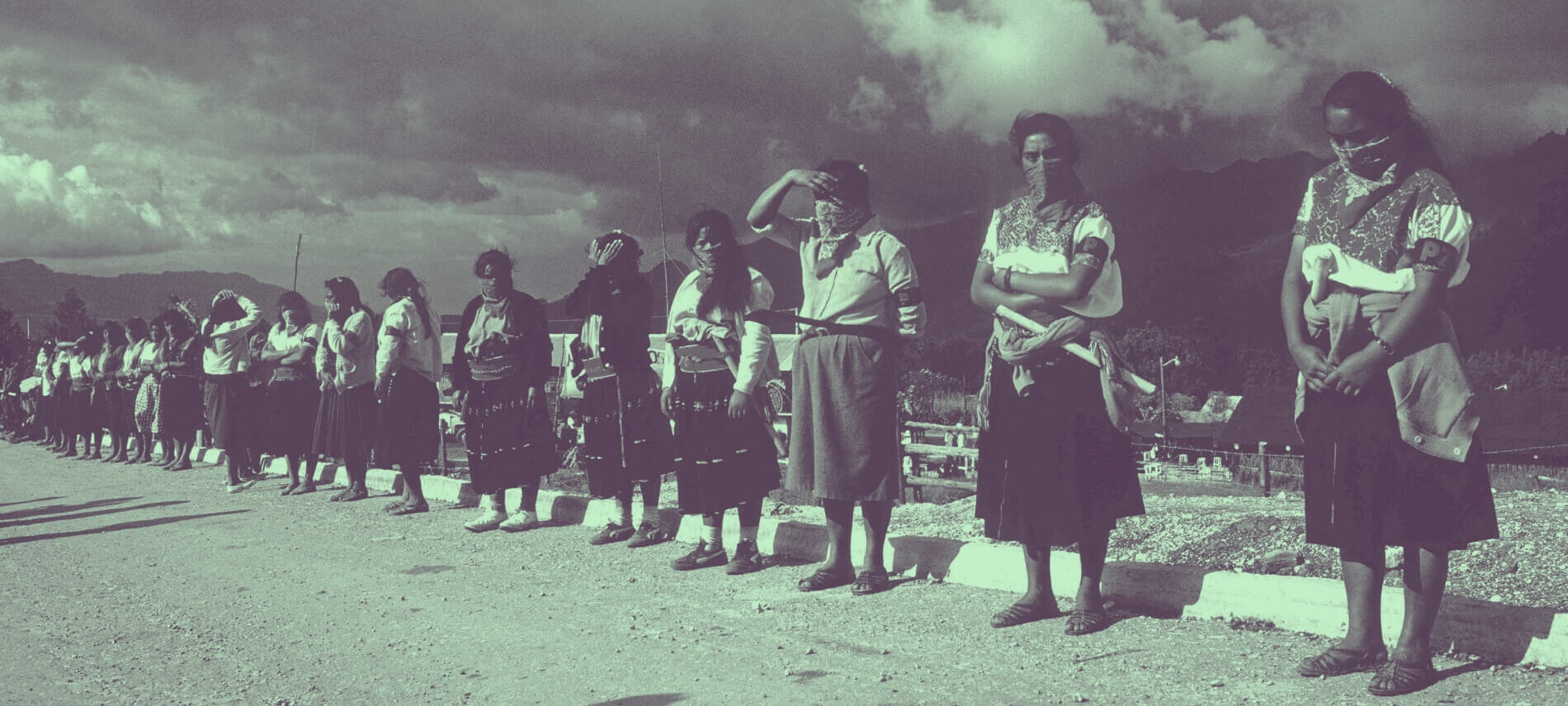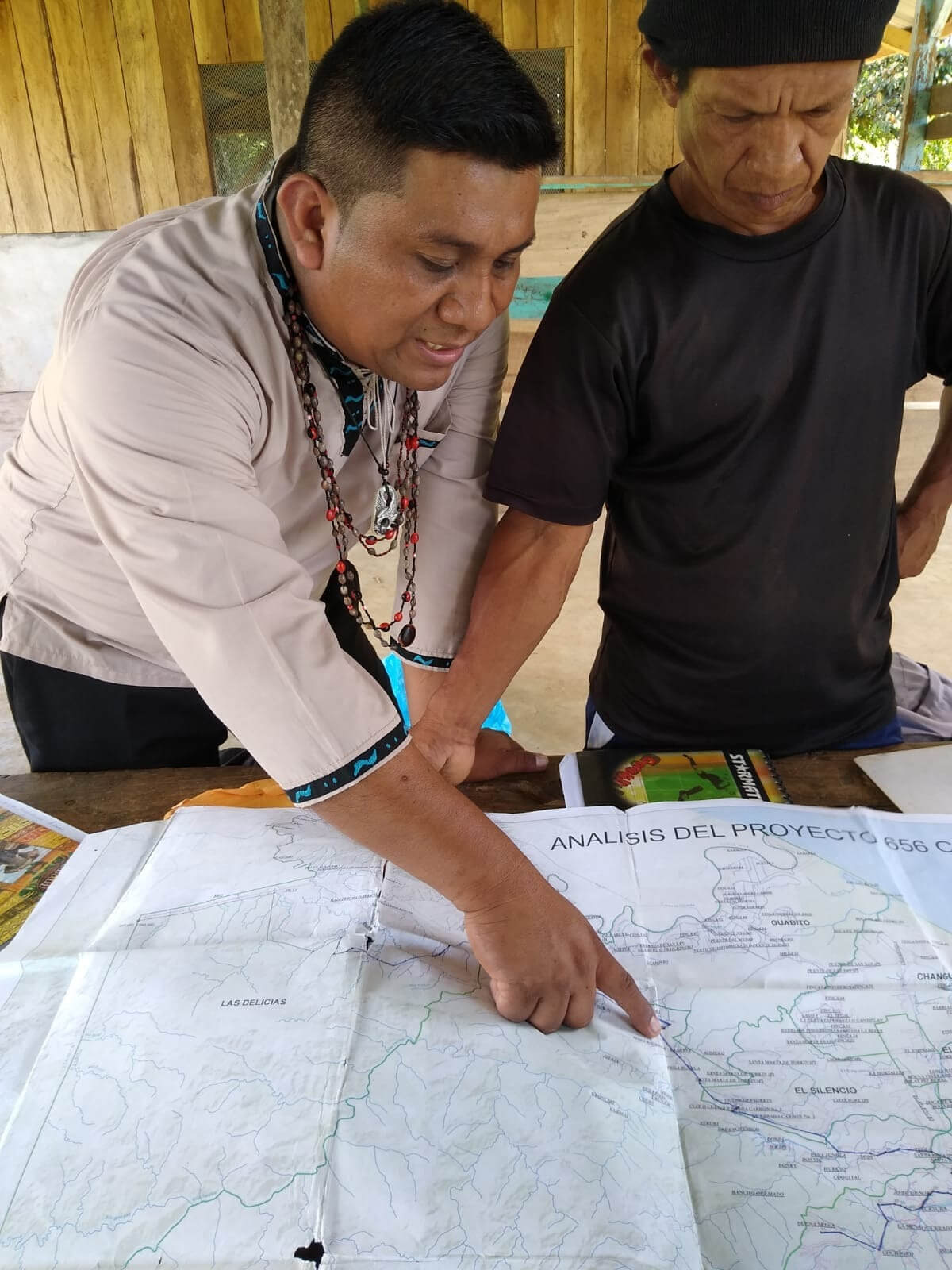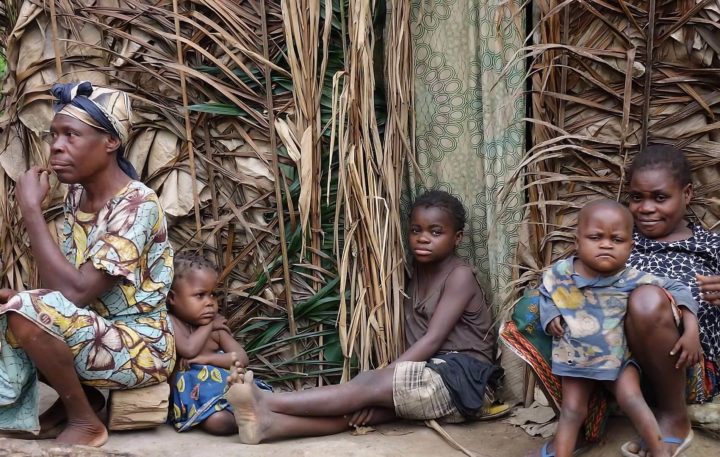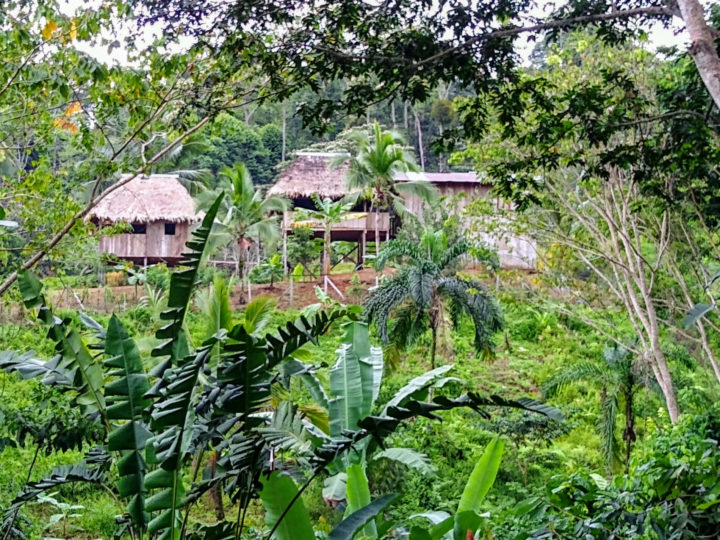
The Indigenous Rights Report is a weekly crash course on everything in the indigenous world.
Make this podcast happen! Support us on Patreon!

In this week’s Indigenous Rights Report:
- United Nations body raises concerns over housing development on traditional Māori land
- 55 Indigenous schools suspended in the Philippines
- Baka “Pygmies” issue a heartfelt plea to European Commission
- Indigenous Yukpa besieged by deforestation and armed conflict
- Leaked Itaipú dam agreements and negotiations with Brazil spawn political crisis
- Ancient Māori knowledge is tackling modern plant disease
- State lawmakers propose legislation to address missing and murdered Indigenous women
- First Nations create a new park reserve
- Mexico’s Zapatistas expand autonomous Indigenous zones in Chiapas
- Indigenous Governor criminalized for opposition to Bear Creek mine
- AP Investigation shows Native Americans not stripped of voting rights in North Dakota
- Rainforest destruction accelerates in Honduras UNESCO site
- The Naso are standing up to protect their land and way of life
- Indigenous women are publishing the first Maya works in over 400 years
- Lives of Indigenous people living in the burning Amazon must be top priority at G7 summit, says MRG
- One million Indigenous people at risk from thousands of rainforest fires
- Brazil’s Indigenous people swear to fight for Amazon ‘to last drop of blood’
- Indigenous communities, national parks suffer as Malaysia razes its reserves
- Indigenous communities in Myanmar take action against top-down conservation
- Coalition outraged over Nebraska Supreme Court decision and committed to fight Keystone XL Pipeline
- Native Americans hold their 2020 Democratic campaign forum
The United Nations human rights body has called for answers over the New Zealand Government’s approach at Ihumātao, citing concerns over consultation with the Māori. The dispute over the housing development planned on the 33ha site in Māngere, South Auckland, has erupted since those occupying the land – regarded as sacred to mana whenua – were served eviction notices last week.
A report published by the Office of the United Nations High Commissioner for Human Rights this month questioned how the development would ensure Māori culture and heritage would be protected under the development, and how the houses would benefit Māori.
In the Philippines’ Mindanao islands, 55 Indigenous schools have been suspended due to alleged national security risks. The islands have some of the poorest regions in the country. It is also home to a diverse Indigenous population collectively known as the Lumads. Lumad schools have been the victim of unabated attacks, threats, and harassment from government soldiers and local paramilitary as the schools were labeled as a hotbed for rebel activities. The paramilitary attacks on the Lumad schools are fueled by an economic agenda to take the ancestral lands from the Lumads. To do this, the government needs to weed out any form of critical thinking and resistance that is engendered from the schools.
Hundreds of Baka “Pygmies” from the Congo rainforest have written to the European Commission, pleading with officials to visit them and ask their “advice and guidance” before providing more funds for the hugely controversial Messok Dja park on their land. The European Commission is one of the main funders of the project in the Republic of Congo. Both the World Wildlife Fund (WWF) and the European Commission have known for a long time that local people oppose the Messok Dja project, but they have carried on funding it in violation of their own policies.

Some Baka live in roadside camps on a permanent basis © Survival International
Both groups have been funding the park’s creation since at least 2014, but have reportedly only started community consultations in 2019. The Commission has also repeatedly denied that park rangers have been abusing local people, but it has never taken any action to investigate the atrocities reported to it by Survival International and others.
The Indigenous Yukpa who live in the Serranía del Perijá in Colombia, on the border with Venezuela, are asking for urgent attention from the state, to help with shortages. They are also having to deal with the arrival of Indigenous Yukpa migrants from Venezuela.
Over the years, they have seen their land be taken over, their rivers diverted, and their people threatened by guerrilla and paramilitary groups. The forests of the Serranía del Perijá Regional Nature Park are being burned and Indigenous peoples are living in difficult health conditions. According to the 2005 Census, there are 4,761 Yukpa living in Colombia, divided among six reserves.
A secretive deal brought Paraguay president Mario Abdo Benítez dangerously close to impeachment – and risks splattering into Brazil. The crisis has forced the resignation of eight officials, so far, and left Abdo fighting for his political life. It’s also raised doubts over his ability to secure better Itaipú terms from Brazil in 2023, something that analysts have called the most important negotiation in the country’s modern history. “The only guarantee that Itaipú works for the development of the country is an informed, awake and mobilized population,” argued Angeles Ferreira, a campaigner and social science professor.
Bridging the Paraná River between Paraguay and Brazil, the shared hydroelectric facility Itaipú dam construction was mired in allegations of billions of dollars in kickbacks, the murder of an ambassador and the mass eviction of Indigenous communities. Today, the dam provides around 90% of Paraguay’s electricity and a little over 15% of Brazil’s supply.
In New Zealand, a disease known as myrtle rust is wreaking havoc on plants in the Myrtaceae family, of which there are around 50 native species. Researchers are collaborating with Indigenous Māori knowledge holders to limit the rust’s impact and ensure the survival of the treasured taonga species. Sharing knowledge between Indigenous peoples has a localized element, but there are similarities as well, so there have been links between the Māori biosecurity network and Indigenous Hawaiian researchers to see what lessons can be learned from their experience, too.

The pōhutukawa, a tree that has suffered from myrtle rust. Sean Hamlin, Flickr.. Photo: Buffy May/flickr (CC)
First carried from South America to Australia through flower imports, the fungus arrived in New Zealand by wind in 2017, posing a major threat to the country’s endemic flora.
Wyoming State lawmakers have proposed legislation to address missing and murdered Indigenous people.The proposed legislation would give officials in Wyoming a more clear picture of missing and murdered Indigenous people while improving cooperation among federal, state, local and tribal authorities when investigating cases.
5,712 Native women have been reported murdered or missing in 2016 to the National Crime Information Center. More than four in five Indigenous women and men have experienced violence in their lifetime, according to a 2016 National Institute of Justice study.
An agreement for a vast new national park reserve is being called a model for future relationships between First Nations and Canada. “This is what our ancestors meant when they entered into treaty with Canada,” said Steve Nitah, who represented Indigenous groups in talks that led to the Thaidene Nene National Park Reserve in the Northwest Territories.
Thaidene Nene — Land of the Ancestors — protects 26,376 square kilometers of pristine waters and healthy forest in and around the east arm of Great Slave Lake. The agreement was signed between the federal and territorial governments and four First Nations. The park is to be co-managed by Parks Canada and the Lutsel K’e First Nation.
In Mexico, the Zapatista National Liberation Army announced that it is extending its leadership of autonomous Indigenous zones to 11 more areas in the southern state of Chiapas. Some of the new autonomous communities will be established on land that the Zapatistas took during an uprising in 1994 following the signing of the North American Free Trade Agreement.
President Andrés Manuel López Obrador called the expansion “welcome” and said it would benefit Indigenous people. The Mexican president has been widely criticized by Indigenous communities for his support of a massive infrastructure project that would extend a 950-mile rail network right through the heartland of Maya Indigenous land in southern Mexico.
In Peru, Puno Governor Walter Aduviri, well-known for his participation in the protests against the Santa Ana mine in southern Puno in 2011, was sentenced to six years in prison and ordered to pay 2 million soles in civil reparations to the Peruvian state, having been found guilty of inciting public disturbances. Describing himself as a victim of political persecution, the Indigenous governor has announced that he will appeal the court’s ruling and will resort to an international judicial forum, if necessary.
Also known as the ‘Aymarazo’, the 2011 protests were against the proposed Santa Ana mine, a concession awarded to the Canadian mining company Bear Creek. Following the protests, the then García government withdrew the concession.
An AP News investigation found that Native Americans are not barred from voting in North Dakota. However, a court ruling earlier this month upheld a state rule that requires voters to show an ID that lists a residential address, which can be a barrier for those living on tribal lands. Federally recognized tribes can assign tribal members addresses.
Various news article and posts that were widely circulated on Facebook wrongly asserted that Native Americans were stripped of voting rights in North Dakota.
Powerful drug-traffickers and landless farmers are continuing to push cattle ranching and illegal logging operations deeper into the Río Plátano Biosphere Reserve, a UNESCO World Heritage site, in eastern Honduras. Deforestation in Río Plátano means a loss of habitat for wildlife and a loss of forest resources for Indigenous communities that depend on them. The reserve covers ancestral territory belonging to Miskito Indigenous communities, who make up nearly half the population in the reserve, and smaller populations of Pech, Tawahkas and Garífunas. But another threat is emerging: water resources are becoming increasingly scarce as forests are converted into grasslands.
The Mosquitia region, straddling the border of Honduras with Nicaragua, comprises one of the largest contiguous rainforest regions in Latin America north of the Amazon Basin, and the Río Plátano Biosphere Reserve holds some of the largest tracts of old growth rainforest remaining in the region.
Located in the Bocas del Toro region of Panama, the Naso, like the nearby Ngäbe-Buglé kingdom, want to create a comarca indígena or demarcated territory, that would cover 160,000 hectares of their ancestral homeland. Unfortunately, their vision of a secured territory conflicts with the government’s interests. Naso leader Jorge Gamarra told IC that the comarca “would protect us against invasion from other Indigenous groups and protect us from businessmen who… are constantly on the look-out for ways to exploit natural resources and minerals.” The Naso would also gain greater autonomy over their own lives. This, in turn, would help them preserve their dying language and their biocultural heritage for future generations.

The Naso community of Kuñ Kjing, Naso ancestral lands, Panamá. Photo: Gabriella Rutherford
The fate of the Naso comarca now lies with Panama’s Supreme Court which will have to consider all of these claims before ruling whether or not the Naso’s land rights are compatible with conservation.
Taller Leñateros is Mexico’s first and only Tzotzil Maya book – and papermaking collective. Founded in 1975 by the Mexican-American poet Ambar Past, the workshop is dedicated to documenting and disseminating the endangered Tzotzil language, culture, and oral history. And it does so environmentally, using only recycled materials. “Incantations: songs, spells, and images by Mayan women” was the first book in over 400 years to be written, produced, and published by Indigenous Mayas.
When Past and her team of 150 Tzotzil women first came together over 40 years ago, their biggest challenge was reviving a lost literary tradition. Today, the few women who remain are striving, against long odds, to maintain their predecessors’ legacy.
The lives of one million Indigenous people living in the rainforest must remain the top priority, says Minority Rights Group International (MRG). ‘Many are calling this an emergency for the planet, and they are right, but it is, most immediately a human rights emergency for the one million Indigenous people who have lived sustainably on these lands since time immemorial,’ says Joshua Castellino, Executive Director of MRG. ‘Their lives and ways of life have been put at risk for decades due to an administration that continues to dismantle Indigenous land rights protections in favor of logging and mining. The deafening silence towards their destruction is only dissipating now in an age of greater climate awareness. The G7 members have a duty to discuss the violations against their human rights while challenging a world order that puts profit before people and planet.’
‘Action is needed urgently by everyone – global leaders, Indigenous activists, civil society, and businesses – to minimize the damage and protect the lives and rights of all starting with Indigenous people in the Amazon,’ says Castellino.
The number of forest fires in Brazil has grown 70% since this last January over the same period last year. The Amazon rainforest was most hit, and several Brazilian local governments also declared a State of emergency. The plume of smoke was also fueled by forest fires in Bolivia and Paraguay, reaching parts of Southern Brazil, Northern Argentina and Uruguay. It’s been proven that all outbreaks of fire in the Amazon are caused by human activity, mainly due to deforestation for the sake of corporate agriculture. This situation has sparked tensions, and in some cases violence, between Brazil’s Indigenous populations and land-grabbers, who believe they have the unspoken support of Bolsonaro’s administration.
Members of Brazil’s Mura Indigenous tribe are prepared for battle against the deforestation and destruction of their home, the Amazon rainforest. Leader Raimundo Praia Belem Mura, has vowed to fight to the bitter end: “For this forest, I will go on until my last drop of blood.” This week, forest fires were up more than 80% in the country year-to-date, hitting their highest point since at least 2013. Environmentalists blame right-wing President Jair Bolsonaro, who has called for the development of protected reserves and railed against environmental fines, emboldening loggers and farmers who seek to clear the land, sometimes by setting fires.
Forest loss appears to be accelerating in peninsular Malaysia in 2019. Much of this deforestation is happening in “permanent forest reserves,” which are supposed to be under official protection. Satellite imagery shows logging happening right up to the border of Taman Negara National Park in Kelantan state. Researchers say this is likely to have detrimental impacts on the parks’ wildlife. Deforestation is also affecting forest-dependent Indigenous communities. Residents of one such community say mining – which often follows on the heels of logging in Malaysia – is also harming them.
Around one-third of Taman Negara, peninsular Malaysia’s largest national parks, is considered one of the world’s oldest rainforests, and is a vital haven for endangered species. It’s also considered customary land for a number of Malaysia’s Orang Asli who depend on the forest to maintain their traditional way of life. When it’s cut down, they are left in poverty, stripped of their means of survival and increasingly susceptible to deadly illnesses. Indigenous communities in Kelantan state have long protested against logging of their native forest by setting up blockades, but they continue to struggle in the face of what they say is corporate indifference.
In southeast Myanmar’s Tanintharyi region, a coalition of organizations, known as Conservation Alliance Tanawthari (CAT), is fighting to stop the massive “Ridge to Reef” project from depriving Indigenous communities of their land, natural resources, livelihoods, and culture. CAT is calling on the United Nations Development Program (UNDP) to stop the “Ridge to Reef project”, which has failed to consult with Indigenous communities and secure their free, prior, informed consent, as required under the UN Declaration on the Rights of Indigenous Peoples and also a UNDP requirement.
The UNDP is implementing the $21 million “Ridge to Reef” project through funds from the Global Environment Facility, with support from the Myanmar government, Flora and Fauna International, and the Smithsonian Institute. The project seeks to designate 3.5 million acres in Tanintharyi region as a government protected area, including forest, coastal, and marine areas. This will add to the government’s large swathe of protected land in a region that has a history of violating Indigenous rights. While the stated aim of these protected areas is to conserve the area’s rich biodiversity and fragile ecosystems, the government has instead given away much of the protected land for large-scale logging and other commercial exploitation, including granting concessions for commercial palm oil plantations.
The Nebraska Supreme Court issued a decision denying the landowners’ appeal and upholding the Nebraska Public Service Commissions decision on the in-state route of Keystone XL Pipeline in Nebraska. The appeal was struck down after a year of work by grassroots advocates to highlight the many ways in which the pipeline would damage their communities and resources.

KXL pipeline construction. Photo:
Ray Bodden on flickr. Some Rights Reserved.
“By ruling in favor of the Public Service Commission, the state Supreme Court has ruled against the community. The climate impacts of this route have not been thoroughly studied, nor were Tribes or landowners properly consulted. We will continue to fight with communities Keystone XL with every available means,” said Sara Shor, 350.org’s Associate Director of US Campaigns.
Native Americans had their 2020 Democratic campaign forum. The candidates addressed issues of critical importance to Native communities, including ballot access and sovereign land rights. The presidential contenders also addressed the crisis of murdered and missing Indigenous women, the growing awareness about how climate change impacts Native communities, and efforts to protect tribal sovereignty and Indigenous lands. The candidates also addressed the need to reduce homelessness, especially among Native veterans, and to improve the schools.
The forum gave some Native Americans encouragement that they are finally being viewed as a constituency worth reaching out to.
This is the Indigenous Rights Report.

Indigenous Peoples are putting their bodies on the line and it's our responsibility to make sure you know why. That takes time, expertise and resources - and we're up against a constant tide of misinformation and distorted coverage. By supporting IC you're empowering the kind of journalism we need, at the moment we need it most.